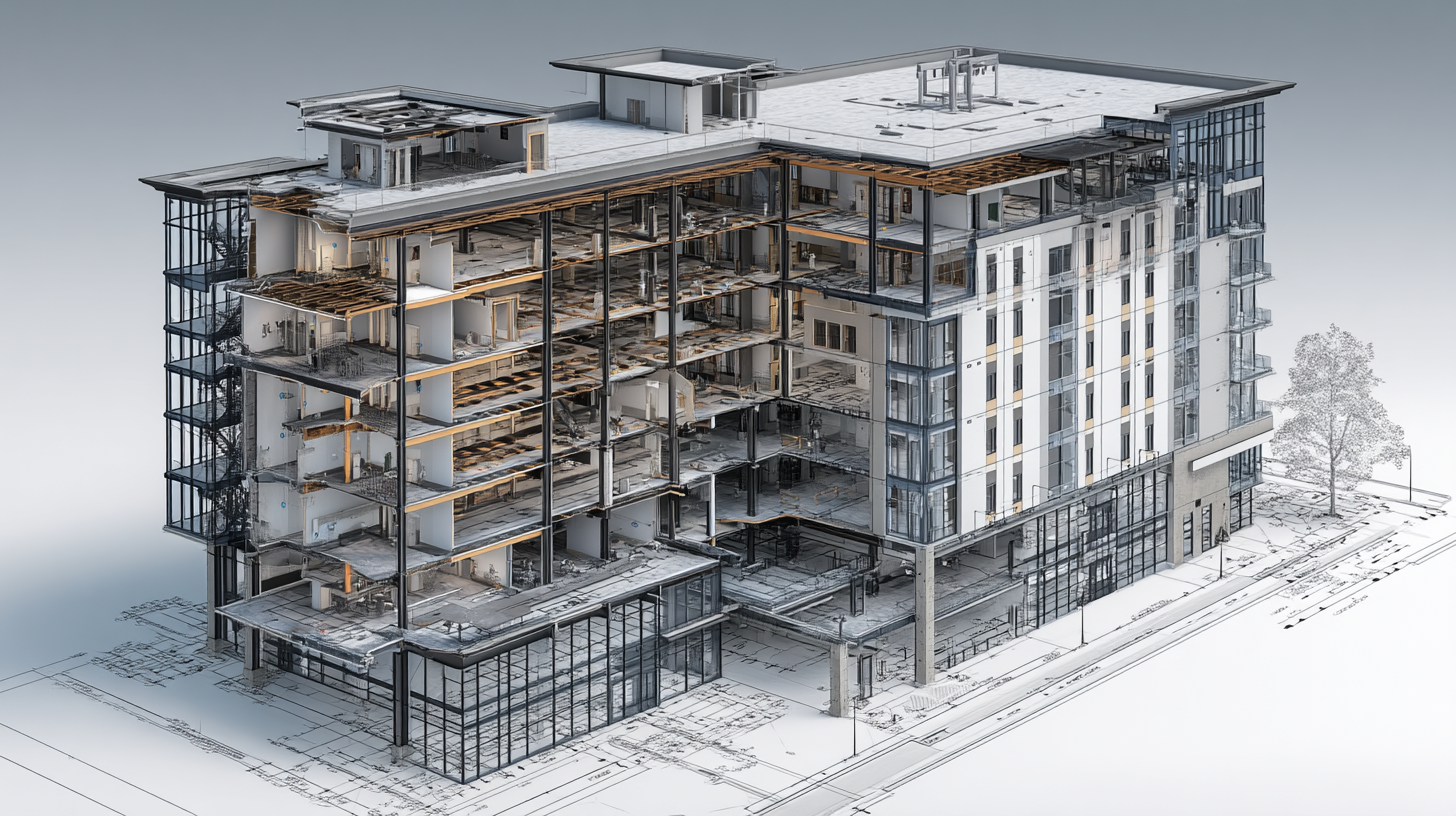Partnered with #1 ADU Builders
Contact Golden State
Drop us a line! We look forward to discussing your next project with you!
Cut the chase! Schedule a face-to-face virtual meeting with us today to dive into your project's next steps.
For our returning clients, experience our streamlined, contact-free project proposal process. Simply fill out our short project questionnaire, and we'll deliver your project proposal within 72 hours.
Contact Us:
Follow Us:

- Golden State Design & Engineering
- Comment 0
How Much Should an Architect Cost in 2025? A Full Guide for California Homeowners
When you begin planning a custom home, ADU, or remodeling projects, one of the first questions you’ll ask is, how much should an architect cost. Because architectural services are such a key component of your building project, knowing the benchmarks, understanding fee structures, and seeing how local conditions affect pricing will help you budget smartly and avoid surprises. In this article, we’ll walk through how architects charge, what drives architects’ fees, what to expect during the design phase through the construction phase, and how GSDE approaches transparent pricing for our clients in California to help you manage the total project cost effectively.
Understanding Fee Structures in Architectural Services
Architects adopt different fee structures depending on project size, scope, complexity, market, and client needs. Here are the primary models you’ll encounter when you hire an architect:
Percentage of Construction Cost
In this model, the architect cost is calculated as a percentage of the total construction cost of the project. It’s one of the most widely used fee structures for full-service residential and custom house projects. The percentage typically ranges from 8 % to 15 % (in some cases higher for very complex or small projects). When you agree to this structure, you’re tying the architect’s compensation directly to the success (and scale) of the entire project.
Fixed Fee (Lump Sum)
With a fixed fee, the architect and client agree on a set fee upfront based on defined scope and deliverables. This may suit smaller projects, ADUs, or design-only tasks. Because the scope is clearer, it limits surprises, though you should plan for change orders if the project details shift.
Hourly Rates
Some architects charge by the hour, billing for hours spent on tasks such as programming, site work, meetings, revisions, or consulting. Typical hourly rates (2025 benchmarks) range from $100 to $300 depending on seniority, geography, and demand. This model is particularly common during concept development, feasibility study, or when the design process is open-ended. Architect bills under this model should clearly break down time spent to maintain transparency.
Per Square Foot
In select cases, especially for simpler or repeatable models, architects may charge a rate per square foot (or per square foot of buildable area). This can simplify early budgeting by tying fee to square footage instead of construction cost. But because architecture work is not always proportional to size, this model is less common for highly custom or complex projects.
Hybrids & Combinations
Many architects use hybrid approaches, a fixed fee for early phases, then percentage or hourly billing later, or capping percentage fees beyond a threshold of cost escalation. This provides both predictability and flexibility.
What Is a Reasonable Architect Cost in 2025?

Let’s talk numbers and benchmarks.
National & Residential Trends
- For full-service custom home projects, the average architect fees are often between 8 % and 15 % of the total construction costs.
- On smaller or simpler projects, or early concept phases, rates might be lower (5 %–8 %).
- For remodeling projects, because of unknowns and coordination complexity, architects often command higher percentages (10 %–20 %).
- Hourly rates generally range from $100 to $300 per hour, depending on experience, location, and specialization.
- In some markets, per square foot fees of $2 to $12 (or more) are used for design-only or basic plans, though that may not cover full services.
So, for a $500,000 construction cost, an architect fee of 8 % would be $40,000, while 15 % would be $75,000. These estimates should include design, construction documents, permitting coordination to obtain building permits, and construction administration (to varying degrees).
California & Local Building Codes Impact
Because GSDE operates in California’s regulatory environment, architect cost often skews toward the higher end of the national ranges. Local building codes are strict, energy compliance (e.g. Title 24) is required, and municipal review and design standards add complexity. In counties like El Dorado, Sacramento, Sonoma, or the Bay Area, many architects must coordinate extensively with planning departments, neighbor design review boards, geotechnical consultants, and more. This extra regulatory burden translates into more hours, more revisions, and higher fees.
Also, in markets with higher cost of living, staff wages, and overhead, architects’ baselines are higher. So even for a similar project’s complexity, you might pay more in California than in lower‑cost states.
What Do Architect Fees Cover?
To properly estimate and compare, you need to know what services are included in an architect’s fee.
Typical Inclusions
A comprehensive architectural services proposal often includes:
- Site plans and foundation plans, including structural drawing and structure basement details
- Roof plans, exterior elevations, section drawings
- Schematic design (concept development, rough layouts, preliminary drawings)
- Design development (refinement, materials, details)
- Construction documents / construction drawings / architectural drawings
- Coordination with structural engineer or civil engineer
- Building permits submittal and revisions to obtain building permits
- Construction administration (site visits, responding to RFIs, submittal review, contractor coordination)
- Coordination with interior designers (if included)
- Some level of project management and oversight during construction phase
In many cases, firms like GSDE integrate structural and civil services (or closely coordinate them) so that clients get a smoother experience and fewer surprises.
Common Exclusions or Optional Add-Ons
Some of the features that may be extra or require separate contracts include:
- 3D renderings, virtual reality walkthroughs, or advanced visualization
- Very detailed or customized interior design work
- Additional site work, landscape architecture, topographic surveys, or advanced land surveys beyond basic
- Extended project management or construction management beyond standard scope
- Unforeseen changes, change orders, or expanded scope
- Structural engineering beyond basic coordination, specialty consultants (geotechnical, acoustical, lighting, etc.)
- Additional revisions or iterations beyond a baseline number
When comparing quotes, always verify which deliverables are included, whether detailed drawings are part of the package, and if site visits are counted.
What Changes the Architect Cost? Key Drivers

Not all projects are alike. These are the factors most likely to shift architect fees up or down.
Project Complexity
If your home has complex geometry, large spans, cantilevers, curves, unusual materials, or requirements for specialty features (e.g. solar integration, smart home systems), the effort to draw house plans, model details, and coordinate with consultants rises. That pushes up your architect fees.
Project Size & Scale
A modest ADU or smaller project may still require full sets of permit-level drawings and coordination, so per-square-foot fees or percentages can feel higher in relative terms. Conversely, very large custom homes or commercial projects can benefit from economy of scale, allowing slightly lower percentages.
Local Building Codes & Review Process
If your city or jurisdiction demands rigorous design review, energy calculations, third-party compliance checks, or strict neighborhood standards, architects spend more time. That increases cost.
Scope Changes, Revisions & Client Decisions
Every change, room moved, window added, roof slope altered, adds design and coordination time. Architects bill for those hours or issue change orders. Clear scope and firm decisions early reduce surprises.
Quantity of Coordination
If your project requires heavy interaction with engineers, surveyors, interior designers, or specialty consultants, your architect becomes the integrator. That increases overhead and design time.
Site Conditions & Unknowns
Challenging terrain, steep slope, tight setbacks, utility constraints, soils issues, or existing structure conditions require additional due diligence and careful detailing, which drives cost.
Architect’s Experience
More experienced architects, such as a principal architect or senior architects, command higher fees due to their expertise, reputation, and ability to manage complex projects efficiently, often resulting in more accurate cost estimates and smoother project delivery.
How Much Does It Really Cost? Example Scenarios (2025 Estimates)

Here are some illustrative examples to help you see how the math plays out in real settings:
Example 1: Custom Home in El Dorado Hills
- Construction cost estimate: $900,000
- Architect fee (10 %): $90,000
- Covered services: full design, construction plans, construction documents, permitting, structural coordination, construction administration during the construction phase
Example 2: Major Remodel in Sacramento
- Construction budget: $250,000
- Architect fee (15 %): $37,500
- Many remodeling projects land on higher percentages due to unknowns, coordination with existing conditions, and code upgrades
Example 3: Detached ADU / Smaller Project
- Size: 850 sq ft (square footage)
- If your architect charges $8 per square foot for scaled-down design services, the fee would be about $6,800
- But note: for ADUs, site constraints, permitting cost, and code compliance can drive more hours than expected
Example 4: Commercial Project or Multifamily
- Commercial or larger multi-unit housing often sees lower percentages (3 %–10 %) because of scale, standardized modules, and more repeatable systems
- However, commercial draw plans and meet code complexity, so the baseline is higher
How to Keep Architect Fees Reasonable
While design quality and expertise should not be sacrificed, there are smart ways to manage cost:
- Define project scope clearly from the start and avoid major changes midstream
- Bundle services (design + structural + civil + permitting) under one firm when possible
- Limit the number of revisions or iterations you request
- Align design goals with realistic budgets
- Engage the architect early, especially before you commit to construction or land acquisition
- Agree in contract on hourly rates beyond baseline scope or change orders
- Understand which services are included (e.g. site visits, drawings, detailed plans)
- Consider using stock plans or modifying existing designs to lower fees and expedite the process
How GSDE Approaches Transparent Architect Pricing
At GSDE, we believe clients deserve clarity, fairness, and real value. That’s why we offer:
- Flexible fee structures tailored to each building project, percentage, fixed, or hybrid depending on project scope
- Detailed proposals that list exactly what’s included (site plans, roof plans, exterior elevations, permits, construction administration, etc.)
- Coordination with structural engineer, civil, survey, and interior design in-house or closely integrated
- Clear process for change orders and project scope adjustments
- Fee benchmarks aligned with local California markets and experience
- Early engagement so we can influence costs through concept development and feasibility before big investments
We help you avoid construction defects by catching design and coordination issues early, before they become costly in the field.
When Should You Hire an Architect? Timing and Strategy

To maximize efficiency and avoid wasted money, hire your architect as early as possible in your timeline. Here’s why:
- Before you purchase land, the architect can help with lot feasibility, setbacks, and neighborhood context
- During concept development, you can better match design to budget
- Early involvement ensures building permits, local building codes, and design constraints are factored in from day one
- The architect can coordinate land surveys, grading, structural input, and site planning in tandem with design, reducing delays
- You set realistic expectations before contractors bid
Delaying architectural involvement until after construction bids or after site is graded often leads to redesigns, cost overruns, or compromises on quality.
FAQs on Architect Cost in 2025
Is 8 % to 15 % a fair architect cost?
Yes, for full-service custom and residential work, that range is common and reasonable across much of the country, and especially in California markets where compliance is more rigorous.
Can I hire an architect only for part of the building process?
Absolutely. Many clients hire architects for schematic design, permit-level drawings only, or design-only scopes. You should expect proportionally lower fees for limited scope work.
Do architects charge for first consultations?
It depends. Some firms charge a nominal hourly fee, but many, including GSDE, offer initial consultations free so you can explore project feasibility and process without upfront cost.
What if my project scope changes mid-project?
Architects issue change orders or supplemental agreements to cover additional work. That’s why a transparent contract and change‑order process are vital.
How do I fairly compare different architectural proposals?
Don’t just compare total cost. Examine what’s included (e.g. construction administration, structural coordination, site visits, permits). Be cautious of quotes with low fees but many exclusions.
Are hourly fees more risky than percentage-based fees?
They can be, especially if scope is loosely defined. But for preliminary services or consulting, hourly billing makes sense. Tie it to clear deliverables or caps.
Final Thoughts: What You’re Really Paying For
When you hire an architect, you’re not just buying a set of drawings or house plans. You’re investing in:
- A design vision suited to your site, lifestyle, and goals
- Coordination of structure, civil, permitting, and construction integration
- Protection against costly errors or conflicts in the entire construction process
- A smoother, more controlled building journey
If you’re ready to build a custom home, ADU, or renovate with confidence in California, GSDE is here to help. Our approach blends design creativity with technical excellence and transparent pricing. Contact us today to begin your journey with a clear proposal and design roadmap.
#NAICS’s:
- 541310 Architectural Services &
- 541330 Engineering Services
DUNS NO:
- 119132267
#SIC’s
- 8712 Architectural Services &
- 8711 Engineering Services
Cage #
- 9R4L5
#UNSPSC’s:
- 81101500, 81101502, 81101505, 81101508, 81101526, 81101533, 81101522

